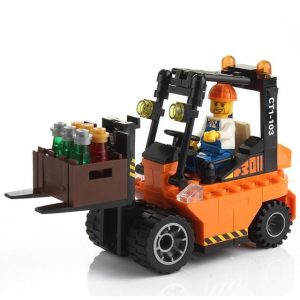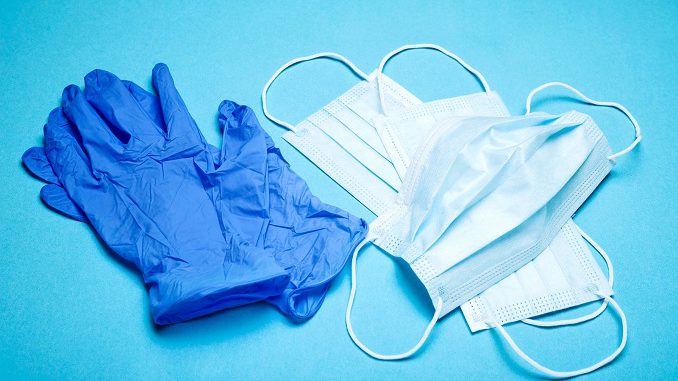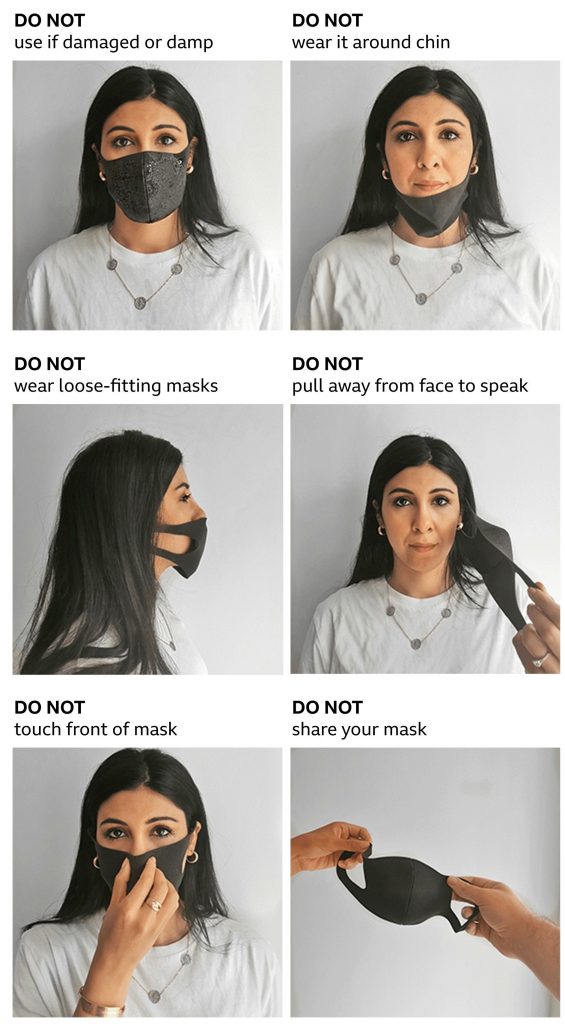
Winter’s coming: are you prepared?
This autumn there have already been incidents of severe flooding, hurricanes and even snow. Although, it is tempting to hope that such extreme weather is just a one-off, our changing climate means that we are likely to experience more severe weather, not less.
The Climate Change Committee has warned that “future UK winter weather may be dominated more often by weather patterns associated with wetter, wilder and windier winter weather”. And although bitingly cold winters are not a key part of the predictions, variability is, meaning that businesses would be wise to properly prepare for winter regardless of how cold, or snowy, it might be. The cold, icy conditions experienced during the winter of 2018/19 — which led to temperatures plummeting to -14°C in the Cairngorms in Scotland and bringing some cities to a halt — were estimated to have cost the UK economy £1 million for every day of disruption.
Preparing for winter
To prepare for inclement weather, a winter plan should be put together with an associated risk assessment. This should be carried out well in advance, and revisited and revised throughout the cold period. The winter plan will be part of the suite of contingency plans already in place that outline what could happen in worst-case scenarios, and how these risks are mitigated and managed. For example, how would the business fare if power supplies went down?
Due to the impact of Covid-19 and the resulting lockdown, last year’s winter plan was likely to have been radically different to those preceding it. Some aspects may be still relevant; others may need adapting based on the current and anticipated measures for Winter 2021/22. As part of any planning process, include a review of how the plan fared last year, as well as the year before, so that new approaches can be adopted where processes were less than ideal.
Some areas that could be addressed as part of winter planning are outlined below.
Preventive maintenance
Bad weather and high winds can expose any building flaws, especially in areas such as roofs or windows. Before winter comes, carry out a condition survey to identify any potential problems, and prioritise them for repair.
Similarly, regularly inspect heating systems and any other plant required for emergencies, such as back-up generators. Proactive maintenance and regular inspections will help reduce the chance of failure when these bits of kit are most needed. Consider setting additional “winter” KPIs to help track and monitor those tasks that need to be given higher priority during this time.
Proper ventilation will also be crucial this winter to help reduce the spread of Covid-19. Options such as opening windows may become less appealing as it turns colder, and so mechanical ventilation will be relied upon. Again, preventive maintenance will help ensure that all systems are functioning well.
Slips and trips
Snow and ice are two obvious winter problems that can be a hindrance to any business. Make sure that supplies of grit are fully stocked, and that weather warnings are regularly checked so that the grit is used when needed. Staff employed to spread grit need proper personal protective equipment (PPE) as well as a map of where to grit, and priority areas. Keep records of where and when gritting takes place and fully train staff. Also ensure that any gritting is carried out in a Covid secure manner, for example, by providing individual PPE.
Do not forget inside the building too — staff bringing snow and ice in on their shoes can create slippery surfaces, so consider adding extra mats at the front doors to help keep the building clean and to absorb any extra wetness.
Remember that slips and trips are not just isolated to times when snow falls. Darker mornings and evenings can cause more accidents, as can autumnal leaf fall. As part of maintenance checks, ensure external lighting is adequate and that entrances and pathways are kept clear of leaf litter and debris.
Staff working outdoors
As part of the maintenance team there might be people who are regularly working outdoors. Although minimum working temperatures do not apply for these workers, there is, however, still a duty of care to ensure that people are not working in unsafe conditions. This could mean that managers need to look at rotas to avoid staff working outside in the cold for long periods of time, as well as making sure there are adequate facilities for people to warm up and take a break. The availability of facilities is especially critical if breaks need to be staggered due to Covid-19, or if the usual facilities have changed. Additional PPE to account for the weather can also be appropriate — for example, having good waterproofs.
Managing sickness
Along with bad weather comes the dreaded winter flu. This year, seasonal flu may also coincide with another wave of Covid-19 infections meaning that managing sickness will be more important than ever. Health and Safety representative and managers can play an important, if not visible, role in reducing the impact of staff illness spreading. For example, by stocking up on soap and alcohol gels and working to promote “hands, face, space” messaging and other good behaviours to reduce the spread infections.
Winter doesn’t always mean catching a cold. For some, it can also bring about the onset of Seasonal Affective Disorder (SAD) as well as a propensity for less exercise and a change in diet. The impact that Covid-19 has had on mental health is well documented, and the onset of winter can make any pre-existing condition worse. Keep this in mind; perhaps renew or re-launch any wellness campaigns or promote any mental health support that is offered by the business.
In short, plan ahead. Make sure that a winter plan is in place, any maintenance is carried out and that the business is ready should the worst happen. If bad weather does strike, then remember to review how it went afterwards and implement any changes that might be necessary.
Contact us for further information or advice.

Toolbox Talk: Slips, Trips and Falls
Why have this talk? Every year many accidents resulting in injuries occur through slips, trips, and falls. Most of these slips, trips and falls that occur are easily preventable with a little consideration and care.
What will this talk cover? The causes and prevention of slips, trips, and falls.
What causes slips, trips and falls?
How to prevent slips, trips and falls
Questions for employees
Do you have any questions for me?
If you require further advice, please contact us.

What are the COVID rules for those who are double-vaccinated?
Those who are fully vaccinated will no longer need to self-isolate when coming into contact with someone who has tested positive for the virus from Monday
The Government has confirmed that those who are fully vaccinated with the Covid jab will no longer need to self-isolate if they come into contact with someone who has tested positive for the virus.
This will go ahead from Monday, August 16, meaning anyone fully vaccinated will only need to quarantine if they test positive for Covid themselves. This also applies to those 18 and under, who will not need to legally self isolate from Monday if coming into close contact with someone with the virus.
In the confirmation of the change in rules, the Government said: “Getting two doses of a vaccine has tipped the odds in our favour and allowed us to safely reclaim our lost freedoms”.
What are the rules for those who are double-jabbed from Monday 16th August?
Anyone who tests positive for the virus will still need to legally quarantine until their symptoms improve and after they have tested negative for Covid.
Everyone will still be advised to take PCR tests if they have come into contact with someone who has tested positive for the virus. This is to check they do not have the virus themselves, as the vaccination is not 100% effective.
This includes health care workers, if they test negative through a PCR test they can return to work and will still need to take lateral flow tests for 10 days.
Anyone who was alerted to self-isolate before August 16 and their quarantine days ends after August 16 can leave isolation from Monday.
The new rules only apply to those who have had their second vaccination within 14 days before August 16. Anyone who has had their second vaccine below 14 days before August 16 will still need to self-isolate if they come into contact with someone who has tested positive.
After 14 days after receiving the second vaccination, they can follow the new rules or not needing to self-isolate.
Everyone is still advised to wear masks in busy or enclosed areas, particularly to those who have come into contact with someone who has tested positive and those coming into close contact with someone who tested positive are encouraged to “limit contact with other people” as the Government explained.
People will still be contacted by the NHS Track and Trace system if they have come in contact with someone who has tested positive but will instead be asked to take a PCR test, rather than to isolate.
The NHS Covid app will be able to prove if people have been double vaccinated or if they are under 18 years. Anyone who has not had two doses or a full vaccination course will still have to self-isolate. The self-isolation rules have helped maintain and control the spread of the Coronavirus pandemic.
Speaking about this Health Secretary, Sajid Javid said: “Asking the close contacts of people with COVID-19 to self-isolate has played a critical role in helping us get this virus under control, and millions of people across the UK have made enormous sacrifices by doing this, every single one of these sacrifices has helped us protect the NHS and save lives.”
Take care. Keep safe!
Contact Walker Health and Safety Services Limited for further information.
(Correct on day of posting)

Tip-overs: #1 killer of forklift truck operators
Forklift tip-over was the focus of the UK’s inaugural Forklift Safety Day. And with good reason.
According to the European Agency for Safety and Health at Work (OSHA), tipping accidents are biggest single cause of fatalities (42%) among forklift operators.
Taking these in order… prevention starts with a risk assessment specific to your site, loads, equipment, etc. and creating safe systems of work to eliminate hazards or minimise the risk associated with them.
Many of these can be addressed by removing, re-modelling or reversing routes that require trucks to travel down slopes (especially while laden), eliminating uneven surfaces and keeping ground conditions in good order (so no potholes or debris). It’s also worth talking to your forklift provider to discuss ways to make trucks inherently safer with speed limiters, load sensors, etc.
While we’re on the subject of training, it doesn’t end with operators. The HSE demands that if you supervise materials handling operations you must have the necessary training and knowledge to recognise what good (and bad) practice looks like. The good news is that Managing Forklift Operations courses are now available online to minimise time off site. Contact us if you require further information.
Driving with the mast raised is the single biggest cause of truck-tip events. State-of-the-art software that prevents tipping by seamlessly adjusting the truck’s speed as it enters a turn, taking into account the steer angle and load. The result is reduced risk of tip-overs, less load shedding and improved productivity as the manoeuvre is completed at optimum speed.
Wearing a seatbelt at all times is the simplest and most effective way of avoiding serious injury in a tipping incident. And it’s the law. The HSE makes clear it will “Prosecute site operators who do not take adequate measures to enforce the wearing of seat belts”. The challenge lies in getting operators to comply.
Even where management is vigilant and issues constant reminders, it’s not uncommon for operators to avoid wearing a seat belt (even where there is an interlock), tricking the machine by fastening the seat belt permanently behind them. So what’s to be done?
Some trucks have introduced a “no cheat” seat belt on electric counterbalance trucks. This switchable function allows the employer – at his or her discretion – to select an option that ensures wearing of a seat belt is mandatory.
To enable the truck to drive the forklift, four steps must be followed:
The truck can then be driven normally. If, however, if the sequence has not been completed or if the operator has tried to circumnavigate it, the machine will not function.
Sometimes, the simple stuff can have the greatest impact.
Contact us if you require further information.

How not to wear a face covering or mask
The coronavirus is here for the long haul! The future will depend on social mixing and the prevention that we have in place and how we comply with that.
Wash your hands often – if soap and water are not readily available, use a hand sanitizer that contains at least 60% alcohol. Cover all surfaces of your hands and rub them together until they feel dry.
Avoid close contact – everyone should wear a mask in public settings and when around people who don’t live in your household.
Clean and disinfect – clean and disinfect frequently touched surfaces daily. This includes tables, doorknobs, light switches, countertops, handles, desks, phones, keyboards, toilets, faucets, and sinks.
Monitor Your Health Daily – be alert for symptoms. Watch for fever, cough, shortness of breath, or other symptoms of COVID-19.
Face coverings must be worn by customers in shops, supermarkets and shopping centres. Shop workers will now also have to wear a face covering.
Face coverings are compulsory for anyone travelling by public transport in England, Scotland and Wales, unless they have an exemption or a reasonable excuse. People can be refused travel if they do not follow the rules and can be fined as a last resort.
Face coverings are also compulsory in a number of indoor spaces. These include:
Some people do not have to wear a face covering. They include:
You can take off your mask if:
World Health Organization (WHO) advice says non-medical face coverings should be worn in public where social distancing is not possible.
Coronavirus is spread when droplets are sprayed into the air when infected people talk, cough or sneeze. Those droplets can then fall on surfaces.
The WHO says there is also emerging evidence of airborne transmission of the virus, with tiny particles hanging in aerosol form in the air.
Homemade cloth face coverings can help reduce the spread from people who are contagious but have no symptoms or are yet to develop symptoms. Taking a face covering on and off can also risk contamination, the WHO says.

Contact us if you require further information.
Thank you to Royal Devon and Exeter NHS Foundation Trust for the mask infographic.
Information correct at time of publishing.